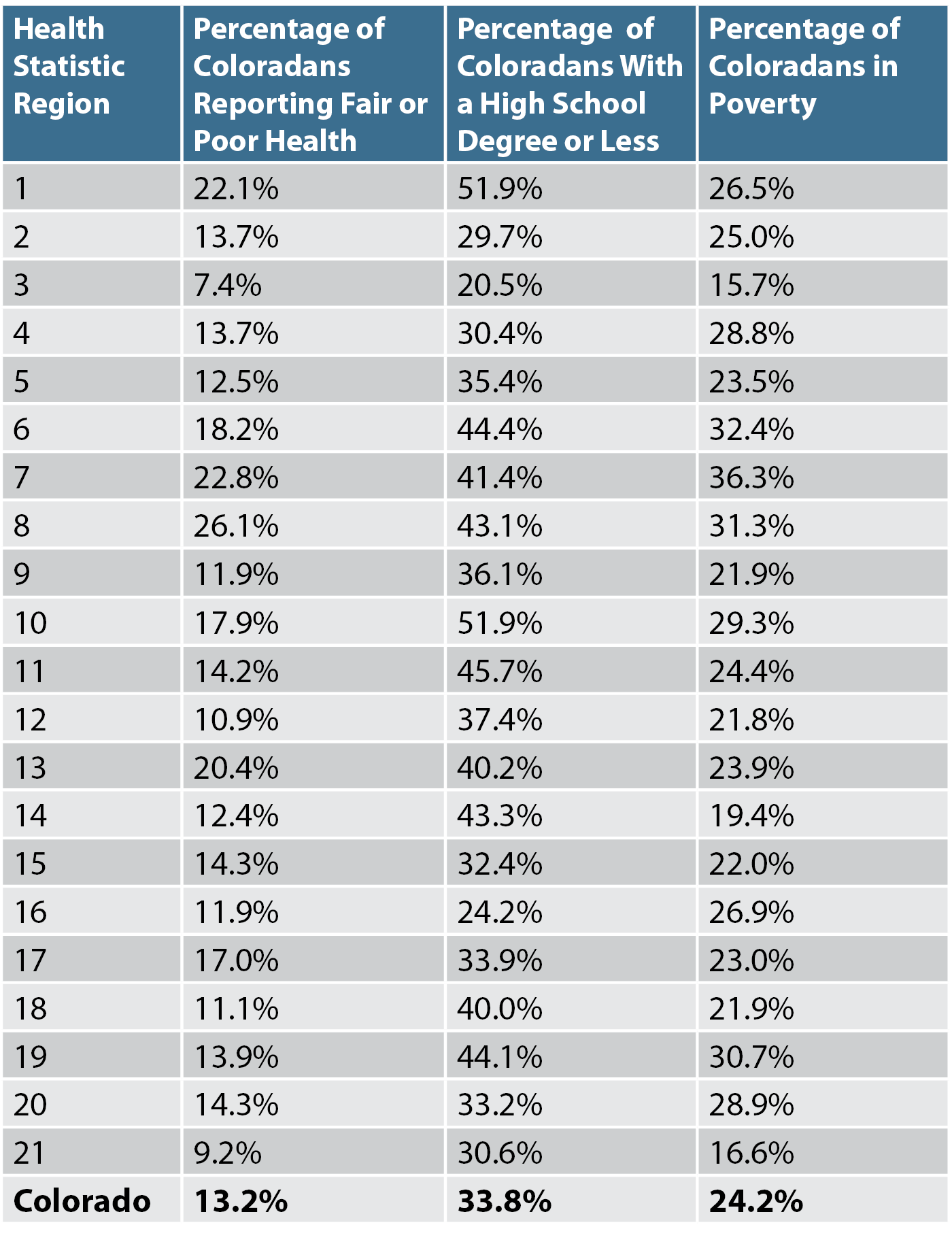
 Social determinants of health are the conditions in which people are born, live and age. They include things like housing, work environments, income and education.
Social determinants of health are the conditions in which people are born, live and age. They include things like housing, work environments, income and education.
None of these happen in a vacuum – the relationship between socioeconomic factors and health does not always happen at the individual level. In fact, there is evidence that a community’s affluence — or lack of it — can play a large role in influencing health outcomes.
A new two-part interactive map, based on data from the 2015 Colorado Health Access Survey (CHAS), illustrates this community-level perspective. The first part shows the relationship between health status and educational attainment. The second explores the role of income.
Pueblo County and the San Luis Valley (HSRs 7 and 8), where more than one of five residents report fair or poor health, have some of the highest poverty rates in the state.
Similar rates of poor health are seen in the northeast corner of the state, where more than half of residents have no post-high school education.
On the flip side is Douglas County (HSR 3), where 93 percent of residents say they are healthy. Douglas County has the state’s lowest poverty rate at 16 percent, and nearly 80 percent of its residents have pursued post-high school education.
Stagnant social mobility can contribute to poor health and vice versa. Students may miss school due to illness. Chronically ill employees may struggle with job performance.
Breaking this link is an important step in helping Colorado become a healthier, more equitable state.
To learn more about this and other important issues in our state, read our analysis of the 2015 Colorado Health Access Survey. You can also email CHAS@coloradohealthinstitute.org with questions about the data or for additional information.


